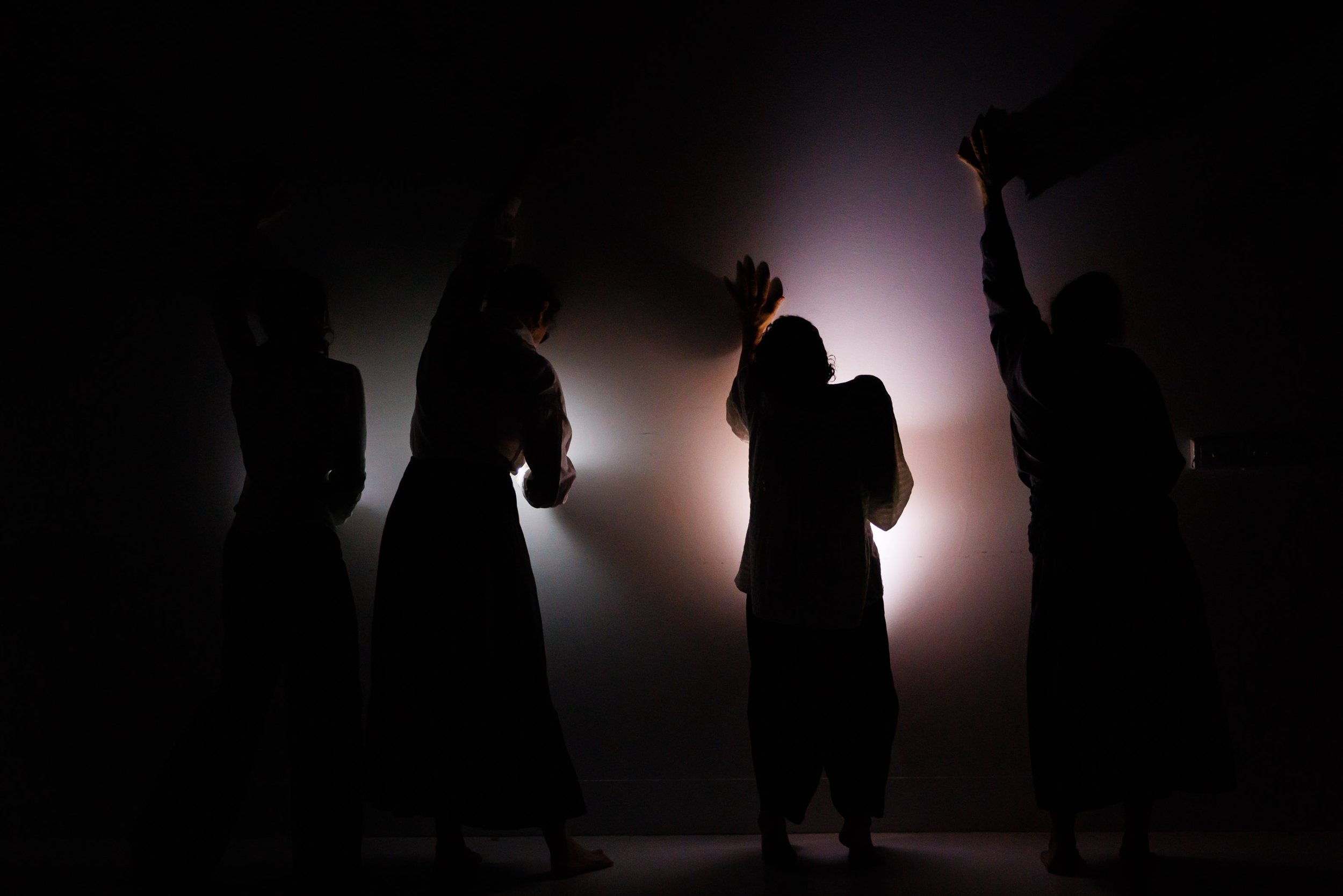
Celebrating 10 years in 2023
Small beginnings
It began with an idea: unable to join fully in available dance classes, and missing the community of fellow dancers, Katrina Rank, started a class that was challenging yet safe for older bodies.
The classes began at Dancehouse, Carlton, often with only 3 or 4 people. It slowly grew in the first few years, then, in 2016, it ‘burst’ into a significantly large community of 50+ mature age dancers, with whom we continue to dance and make work with. This creative body includes print makers, graphic artists, designers, writers, musicians, choreographers and dancers with deep and sustained practices in the arts and those engaging in the performing arts for the first time.
Building visibility
Fine Lines is interested in sustaining artistic and physical practice and making work that is provocative and conceptually clear.
We present work to raise awareness of the possibilities of movement at any age, to continue to grow as artists and to develop new skills.
We produce live and filmed performances that showcase older dancers as strong, talented, skillful and interesting.
And we aim to reach new audiences, to inspire others to follow their passion.
Fine Lines:
• sees a myriad of possibilities in each body
• connects with audiences and advocates for a changed perspective
• questions labels and assumptions
• is bold and uncompromising
Benefits of dance, what the research says
There is an emerging body of research regarding the benefits of dance activity for older people . The research offers a qualitative assessment of the health benefits, social inclusion, and community participation offered by dance activity.* Dancing involves the whole body, activating joints and muscle groups, improving balance, posture, coordination, control, flexibility and strength, increasing body and spatial awareness, playing an important role in falls prevention and neurological health. As a social activity, it provides an avenue for engaging with friends old and new, while learning and building new physical and artistic skills together.
Dance is well known to improve the mental health and well being of participants that dance together on a regular basis. Because the body is the instrument of the dance, it requires self care, agency and cooperation. It requires participant-dancers to value and appreciate their own bodies, minds and lived experience. Dancers who work in this way value the contribution of all dancers in the group and work together to support each other’s personal, creative and artistic growth and exploration. When dance is pursued as a creative and artistic art form, participants are challenged cognitively and creatively, contributing to feelings of self-worth, enthusiasm for life and pleasure.
see link below for a review of the research literature
Our dancers say…
“Dance movement feels the right sort of movement for me, as distinct from that of anything involving sport. And to work at a movement, work through it, feel pleased with its execution - that is truly rewarding. What a joy to make explorations with the body, to follow a private narrative, or of one according to instructions or suggestions. Thanks to the music given, pain can often, extraordinarily, be put on the back-burner.
Also, there is nothing like the challenge of performing - as we have discovered several times over the last few years.”
“I love to learn and I love dancing . I can dance in Fine Line because I do not feel self conscious about my age or my limitations as a dancer.”